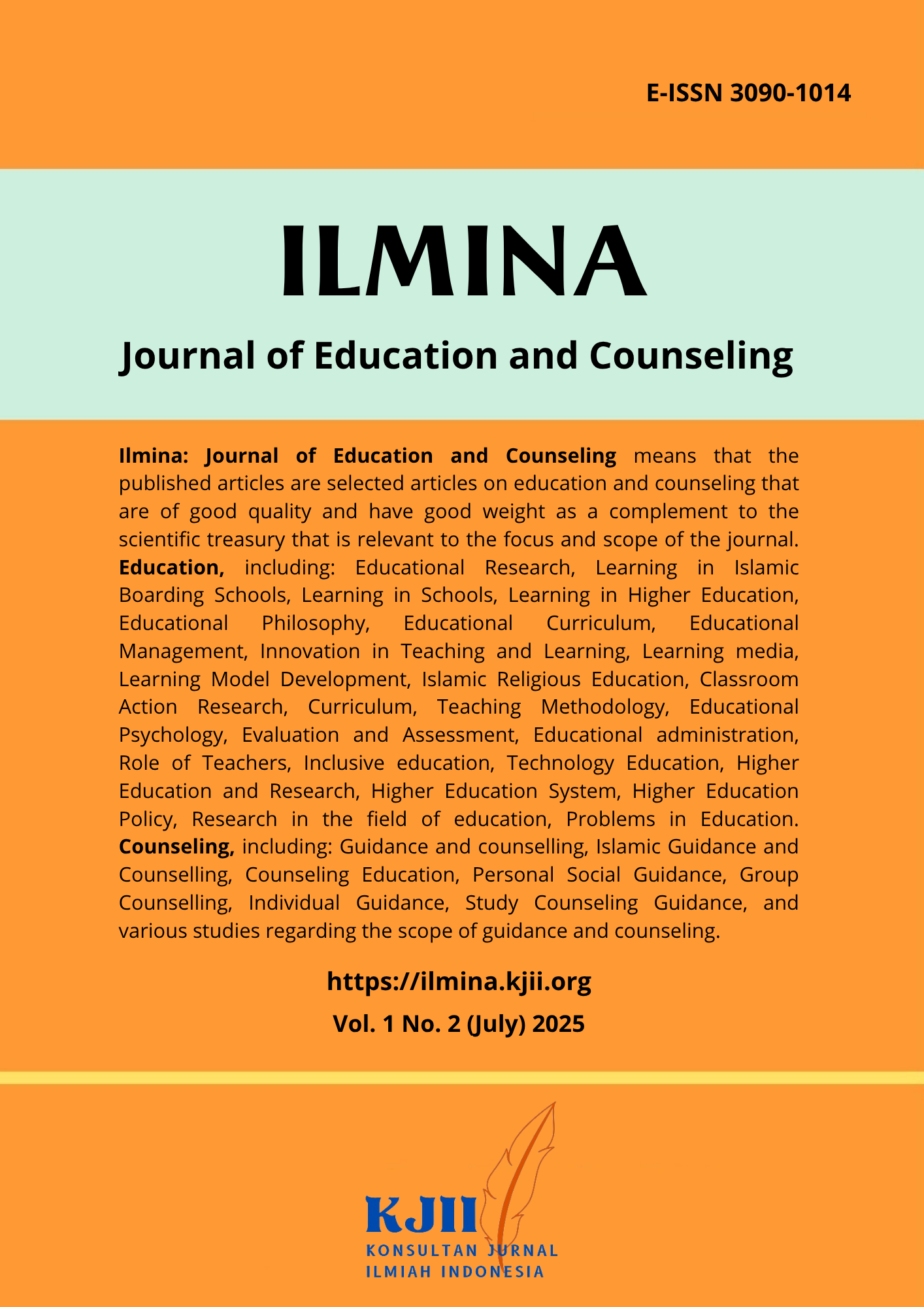Transforming the Education System Amidst Technological Developments by Utilizing E-Learning in the Digital Era
DOI:
https://doi.org/10.63738/ilmina.v1i2.10Keywords:
E-Learning, Interactive Technology, Educational TransformationAbstract
E-learning has become a major innovation in education, offering flexible, interactive, and efficient solutions to traditional learning challenges. This study explores the development of e-learning technology, from its early computer-based applications to modern web-based applications utilizing Learning Management Systems (LMS). Furthermore, the study discusses the implementation of e-learning at various levels of education, from schools to universities, and identifies factors influencing its success, such as technological infrastructure readiness, educator competency, and students' digital literacy skills. The study's findings indicate that e-learning can expand access to learning resources, increase student engagement through interactive technology, and provide flexibility in time and place. However, key challenges include the technological gap between urban and rural areas, resistance to changes in teaching methods, and the need for specialized training for educators. With the support of inclusive education policies and sustainable infrastructure development, e-learning has the potential to transform the education system to become more modern, adaptive, and individual-oriented. This research is expected to provide insights for the development of more effective e-learning in the future.
References
Barrit, C., & Alderman, G. (2004). E-learning: A strategic approach. John Wiley & Sons.
Budi Murtiyasa, B. (2012). Pemanfaatan Teknologi Informasi dan Komunikasi dalam E-Learning. Jurnal Pendidikan Teknologi dan Kejuruan, 2(2), 123-134.
Clark, R. C., & Mayer, R. E. (2016). E-learning and the Science of Instruction: Proven Guidelines for Consumers and Designers of Multimedia Learning (4th ed.). John Wiley & Sons.
Cross, J. (2002). Informal Learning: Rediscovering the Natural Pathways that Inspire Innovation and Performance. John Wiley & Sons.
Didik Himmawan, Nesa Fitriyani Hasanah, Dhiah Farah Dhifa, & Fitri Nurul Hidayah. (2025). Analysis of E-Learning Management Development at High School Level. Manajia: Journal of Education and Management, 3(2), 147–159. https://doi.org/10.58355/manajia.v3i2.44
Hiltz, S. R. (1990). Online Education: Perspectives on a New Environment. Praeger Publishers.
Nurjannah, L. S., & Himmawan, D. (2025b). Implementation of E-Learning in Schools to Improve Student Skills. (Note: Harap verifikasi judul lengkap, jurnal, volume, nomor, dan halaman yang tepat jika tersedia).
Purnomo, S. (2009). Perkembangan E-Learning di Indonesia. (Note: Ini tampaknya bukan sumber jurnal atau buku formal, mungkin presentasi atau laporan. Akan lebih baik jika ada sumber akademis yang bisa dicari).
Rosenberg, M. J. (2001). E-Learning: Strategies for Delivering Knowledge in the Digital Age. McGraw-Hill.
UNESCO. (2020). COVID-19 Educational Disruption and Response. Retrieved from https://www.unesco.org.
Universitas Wiralodra. (2021a). Prototipe Pengembangan E-Learning di Universitas Wiralodra. Retrieved from https://ejournal.sultanpublisher.com/index.php/abdisultan/article/view/188.
Universitas Wiralodra. (2021b). Pemanfaatan Platform E-Learning Berbasis Cloud Computing di Perguruan Tinggi. Retrieved from https://edum.unwir.ac.id/index.php/edumjournal/article/download/144/125/849.
Universitas Wiralodra. (2021c). Implementasi Pembelajaran melalui Aplikasi Zoom Meeting di Pendidikan Agama Islam. Retrieved from https://islamicpedagogia.faiunwir.ac.id/index.php/pdg/article/view/111.
Universitas Wiralodra. (2021d). Evaluasi Hubungan antara E-Learning dan Disposisi Matematika Mahasiswa. Retrieved from https://www.mathline.unwir.ac.id/index.php/Mathline/article/view/198.
Wahyuni, S., Hidayat, T., & Kusumaningrum, D. E. (2020). Kendala dan Peluang E-Learning di Perguruan Tinggi. Jurnal Pendidikan dan Teknologi, 12(3), 67-78.
Whyte, C. B. (1989). The computer in higher education: A review of research. (Note: Perlu verifikasi detail publikasi lengkap).
Yoo, S. J., & Huang, W. (2016). Cloud-based E-learning and Its Educational Benefits. Computers in Education Journal, 23(4), 45-58.




